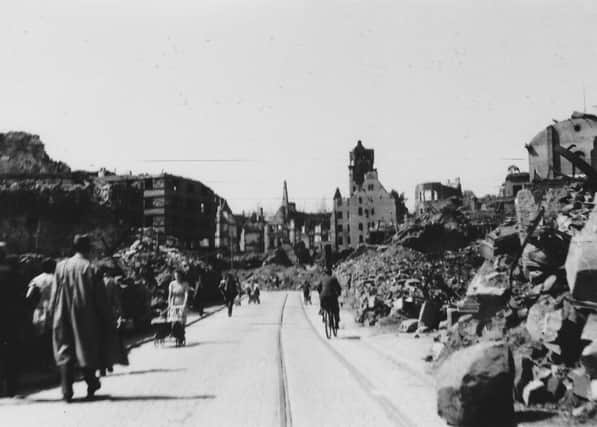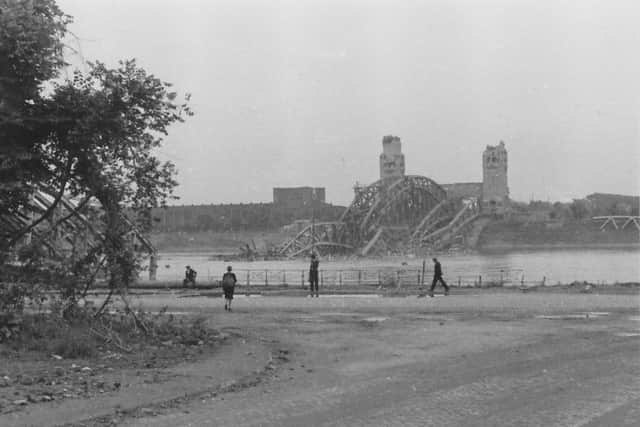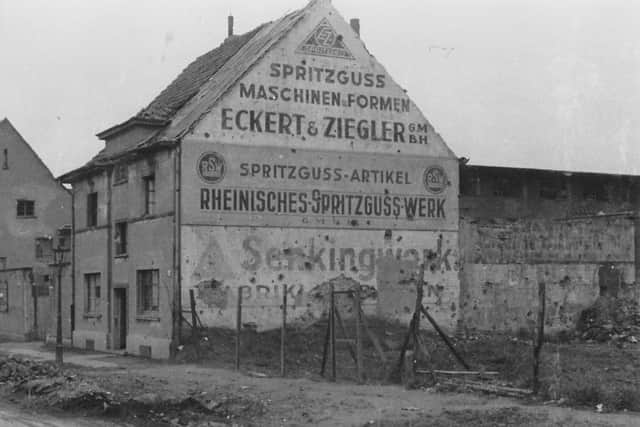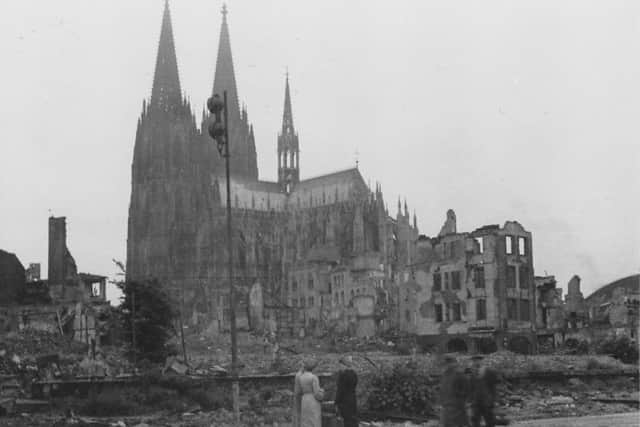Photos of bombed Germany taken by Eastbourne man


Christopher Eve recently found the pictures taken by his grandfather Harry D Thurgar in Germany in May and June 1946.
Mr Thurgar lived in Eastbourne in about 1917/1918 and his parents lived at 222 Seaside Road running the Royal Oak pub then and into the 1920s. Then they moved to 16 Beltring Road, nearby.
Advertisement
Hide AdAdvertisement
Hide AdMr Eve, who visits Eastbourne regularly as he has a house here but lives in Lancaster, writes, “I have recently had some photos developed which were taken by my late grandfather, Harry D Thurgar, the co-founder of Thurgar Bolle Ltd.


“The photos were taken by him in May and June 1946, a year after VE Day, when he went to Germany on a business trip to gather intelligence about the German comb industry.
“The photos show the incredible war damage to the German cities he visited.
“When I first saw the photos I was awed. These images only seem to have come to light after 71 years and are of great historical interest.
Advertisement
Hide AdAdvertisement
Hide Ad“The wreckage, as seen in the photos, was so immense and I pity the poor people who had to endure it.


“It’s chilling to realise there would have been many bodies buried underneath all that rubble.
“It was my father’s Bomber Command comrades and those of the USA AF who caused all that devastation as part of the effort to defeat the evil Nazi regime.
“The following winter (1946-47) was particularly harsh and living conditions were extremely difficult. Thousands of people died from cold and hunger in Germany.
Advertisement
Hide AdAdvertisement
Hide Ad“The photos also gave me a window into a period of my grandfather’s life which I only vaguely knew about. I never met him as he died six years before I was born.


“I recently took the negatives to Max Spielmann in Lancaster to be developed.
“My family has no idea if they were ever developed before and gave them to me.
“Being 71 years-old, they are truly a historical treasure-trove. The total collection is about 350 photos from 10 reels of 35 ml negatives.
Advertisement
Hide AdAdvertisement
Hide Ad“Fortunately, the negatives were labelled and from an HMSO publication of the time, which I have inherited, it is possible to date and place each photograph fairly accurately.


“The booklet is British Intelligence Objectives Sub-Committee Final report No. 857 Item No.22. German Comb Industry. London: HMSO, (1946)
“My grandfather, the founder and managing director of Thurgar Bolle Ltd, a Northamptonshire-based plastics and comb manufacturer, (no longer in existence), was appointed by the Board of Trade to visit post-war Germany, as part of the Allied Control Council, to conduct a survey of the German Comb Industry.
“This was a small part of the Allied powers’ intelligence-gathering work after the war, to benefit from the presence of the Army of Occupation there and as German recompense for the war.
Advertisement
Hide AdAdvertisement
Hide Ad“It was also important to help Germany back on it’s feet after so much destruction and to fend off the risk of starvation. The four-man team, led by my grandfather, were required to wear army uniforms, with Grandpa given the honorary rank of Colonel.
“Over a period of four weeks, the investigators visited 30 firms situated in the British, American and French Zones of occupation. These firms included actual comb makers, manufacturers of raw materials, comb making plant and tools and dies.
“Numerous factories had been bombed out and relocated elsewhere. The towns and cities visited included Hanover, Celle, Hamburg, St Tronis near Krefeld, Cologne, Troisdorf, Kettwig-Ruhr, Schotmar, Bad Salzuflen, Munich, Weissenberg, Nuremberg, Pforzheim, Mannheim-Neckarau, Lauterbach, Wurttemberg, Mengen, Calw, Stuttgart, Weisbaden and Frankfurt. They flew home from Frankfurt.


“The team formed the general impression that no revolutionary developments in technique, or machinery, had taken place during the war, and in the main, the methods of production were similar to the usual British methods.
Advertisement
Hide AdAdvertisement
Hide Ad“They used saw-cut methods and injection moulding, in celluloid, cellulose acetate sheet, polystyrene and vulcanite plastics.
“Thurgare Bolle Ltd had been founded in London in 1931 as a comb and plastics manufacturer (later of sunglasses and other products), by Harry D. Thurgar and Georges Bolle, of Oyonnax (between Geneva and Lyon) in France.
This company existed until 1974 under that trading name, when it became Thurgar Bardex plc, and continued in business until about 1991.
Bolle, as a separate company, is still trading today and manufacture and sell high quality sunglasses, ski goggles and ski helmets. It is now based near Paris.
Advertisement
Hide AdAdvertisement
Hide Ad“During the War, Thurgar Bolle’s original factory in Alperton, Middlesex, had been bombed during the Luftwaffe’s Blitz during the winter of 1940-41. The business had already been in the process of moving out of London, to the safer, rural county of Northants.
During the war, it was requisitioned to make perspex canopies for fighter and bomber aircraft, the plastic elements for bomb sights on the Wellington bomber and the plastic parts for early radar.”